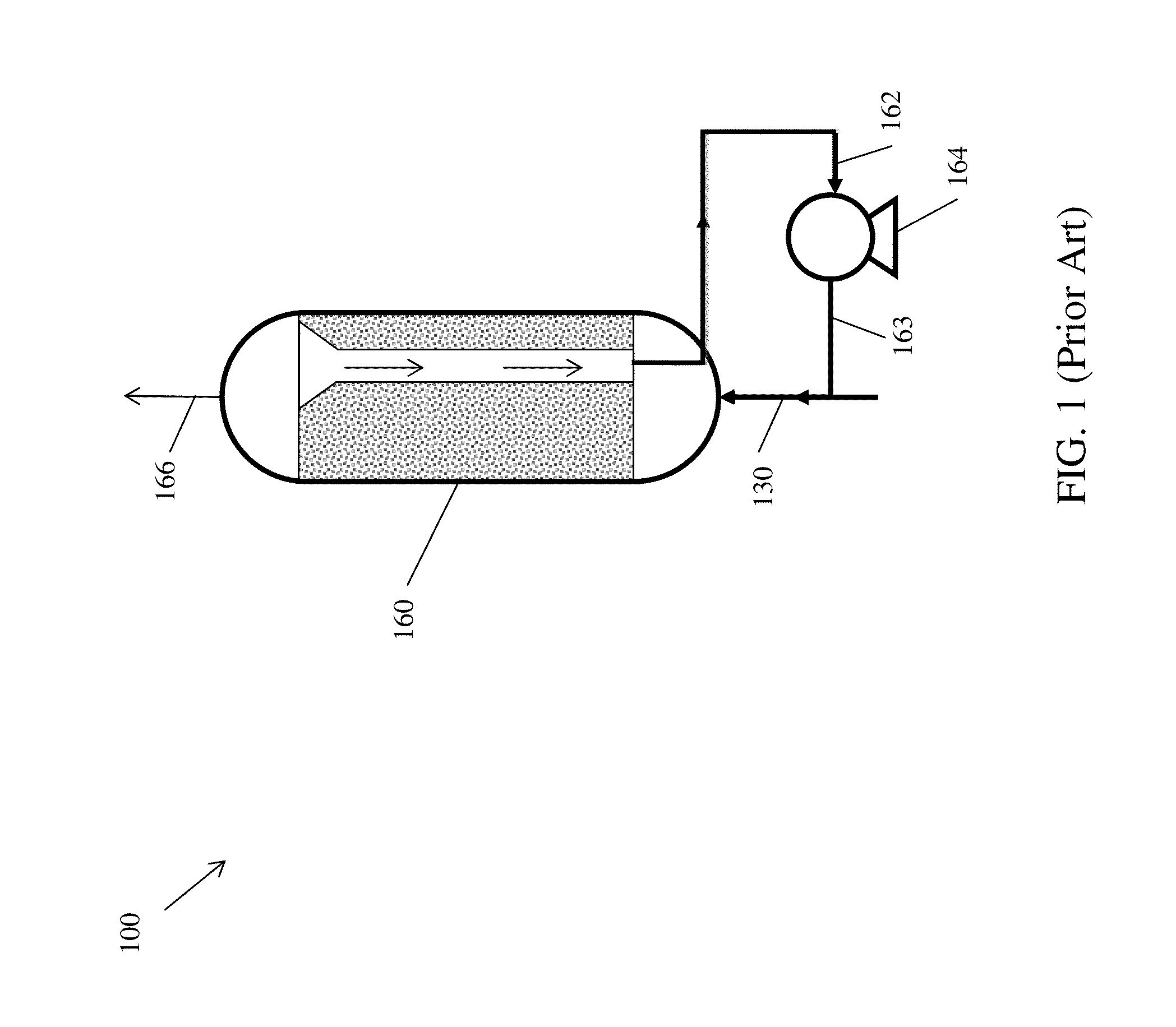Ebullated-bed process for feedstock containing dissolved hydrogen
- Summary
- Abstract
- Description
- Claims
- Application Information
AI Technical Summary
Benefits of technology
Problems solved by technology
Method used
Image
Examples
example
[0071]A vacuum residue derived from Arabian heavy crude oil, the characteristics of which are given in Table 1, was hydrocracked in a single-stage ebullated-bed reactor at 440° C., 150 bars of hydrogen partial pressure, 0.3 liters of oil per liters of reactor volume and with 0.8 kg of catalyst per tons of vacuum residue. The total hydrogen gas rate is set at four times the rate at which hydrogen is consumed in the process. The ebullated-bed reactor was operated at a recycle-to-feedstock ratio of 10:1.
TABLE 1CompositionProperty / UnitValueDensityKg / L1.04SulfurW %5.3Nitrogenppmw4000CCRW %251050° C.+W %91
[0072]The total material balance for the process which is configured as shown in FIG. 3B is given in Table 2.
TABLE 2StreamComponent310316312320324326318330366362bHydrogen93381381288028893H2S510NH330CH485C2H686C3H8150C4H10120C5-180810180° C.-240° C.537240° C.-370° C.1,634370° C.-520° C.9009009002,340520° C.+9,10048,00048,00038,900Total10,0009338149,281288028848,9936,30238,900
[0073]The tot...
PUM
 Login to View More
Login to View More Abstract
Description
Claims
Application Information
 Login to View More
Login to View More - R&D
- Intellectual Property
- Life Sciences
- Materials
- Tech Scout
- Unparalleled Data Quality
- Higher Quality Content
- 60% Fewer Hallucinations
Browse by: Latest US Patents, China's latest patents, Technical Efficacy Thesaurus, Application Domain, Technology Topic, Popular Technical Reports.
© 2025 PatSnap. All rights reserved.Legal|Privacy policy|Modern Slavery Act Transparency Statement|Sitemap|About US| Contact US: help@patsnap.com



